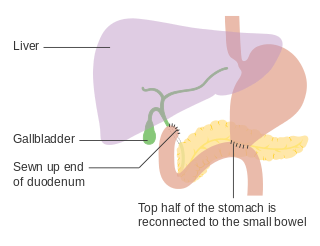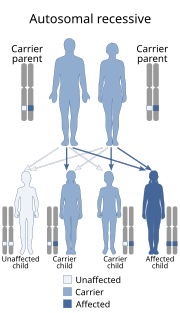
The National Museum of Health and Medicine (NMHM) is a museum in Silver Spring, Maryland, near Washington, DC. The museum was founded by U.S. Army Surgeon General William A. Hammond as the Army Medical Museum (AMM) in 1862; it became the NMHM in 1989 and relocated to its present site at the Army's Forest Glen Annex in 2011. An element of the Defense Health Agency (DHA), the NMHM is a member of the National Health Sciences Consortium.
František Chvostek was a Czech-Austrian military physician. He is most notable for having described Chvostek's sign which he described in 1876.
Victor Pavlovich Protopopov was a famous Ukrainian Soviet psychiatrist and, member of the URSR Academy of Sciences. Being a pupil of Vladimir Bekhterev, Protopopov founded his own pathophysiological school of thought in the Soviet psychiatry. Victor Pavlovich Protopopov authored more than 110 articles.
Paroxysmal Nonkinesigenic Dyskinesia (PNKD) is an episodic movement disorder first described by Mount and Reback in 1940 under the name "Familial paroxysmal choreoathetosis". It is a rare hereditary disease that affects various muscular and nervous systems in the body, passing to roughly fifty percent of the offspring.
Alberto Ascoli was an Italian serologist, hygienist and physiological chemist, who developed a test for anthrax.
Billroth I, more formally Billroth's operation I, is an operation in which the pylorus is removed and the distal stomach is anastomosed directly to the duodenum.

Billroth II, more formally Billroth's operation II, is an operation in which the greater curvature of the stomach is connected to the first part of the jejunum in end-to-side anastomosis. This often follows resection of the lower part of the stomach (antrum). The antrectomy is not part of the originally described procedure. The surgical procedure is called gastrojejunostomy.

In general surgery, a Roux-en-Y anastomosis, or Roux-en-Y, is an end-to-side surgical anastomosis of bowel used to reconstruct the gastrointestinal tract. Typically, it is between stomach and small bowel that is distal from the cut end.
Hans Finsterer was an Austrian surgeon.

Cross–McKusick–Breen syndrome is an extremely rare disorder characterized by white skin, blond hair with yellow-gray metallic sheen, small eyes with cloudy corneas, jerky nystagmus, gingival fibromatosis and severe intellectual disability and physical retardation.

Sophie Spitz, M.D. was an American pathologist who published the first case series of "juvenile melanoma,", skin lesions that have come to be known as Spitz nevi. For her contributions to pathology, and especially for her foresight in advocating the use of the pap smear when it was newly devised, she is recognized as a prominent pathologist of her time.
Poul Bjørndahl Astrup (4 August 1915 – 30 November 2000) was a Danish clinical chemist famous for inventing a CO2 electrode and co-inventing the concept of base excess.
The Frei test was developed in 1925 by Wilhelm Siegmund Frei, a German dermatologist, to identify lymphogranuloma venereum. Antigen made from sterile pus aspirated from previously unruptured abscesses, produced a reaction in patients with lymphogranuloma venereum when injected intradermally. Other sources of antigen have been explored, most deriving from various tissues of mice infected with Chlamydia. The test is no longer used but stands as a milestone in our understanding of immunology. A heat inactivated LGV 0.1ml grown in yolk sac of embryonated egg is injected intra dermally on the forearm and a control material prepared from noninfected yolk sac on the other forearm i.e. control. After 48–72 hours, an inflammatory nodule more than 6mm in diameter develops at the test site.
Leiner's disease is a systemic disease, a skin disorder and extends to erythroderma, typically diagnosed in early infancy. Leiner’s disease is characterized by a long-lasting seborrhea dermatitis associated with increased likelihood to infection. Other characterizations found on newborns with Leiner’s disease are a patch or a large patch of red skin normally on the bottom and spreads to the rest of the body. This disease is also listed as a "rare disease", meaning that a small percent of the population, fewer than 200,000 people in the United States, will have this disorder.

Luigi Luciani ForMemRS was an Italian neuroscientist. He also contributed to Karel Frederik Wenckebach's work on what is now known as second-degree atrioventricular block of the heart in which Wenckebach described the periodicity of this block as "Luciani periodicity."

Pierre-Antoine-Ernest Bazin was a French physician and dermatologist born in Saint-Brice-sous-Forêt. His brother, Antoine-Pierre-Louis Bazin (1799-1863), was a noted Sinologist.
Prof Richard Lightburn Sutton FRSE FRGS LLD was an American dermatologist. He gives the eponym for Sutton's disease, Sutton's naevus and Sutton's phenomenon.

Raymond-Céstan syndrome is caused by blockage of the long circumferential branches of the basilar artery. It was described by Fulgence Raymond and Étienne Jacques Marie Raymond Céstan. Along with other related syndromes such as Millard-Gubler syndrome, Foville's syndrome, and Weber's syndrome, the description was instrumental in establishing important principles in brain-stem localization.
Emil Najman was a Croatian pediatrician who in 1952 described the Imerslund-Gräsbeck syndrome.
George Linius Streeter PAAA NAS APS HFRSE (1873–1948) was a 20th century American anatomist and world leading embryologist. He was Director of the Carnegie Institution of Washington from 1917 to 1940.










